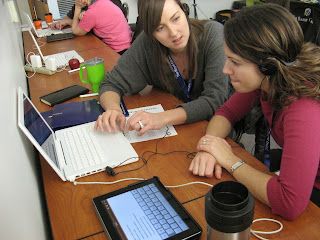Changing how we live with technology, old school
Human beings have been making and using tools to help us survive and thrive since our earliest days.
Imagine what it must have been like for our first ancestors to have created a spark that caused a fire to glow in their midst. What a life changing moment in our human story. This new tool would allow them to warm themselves, cook food, see in the dark, protect themselves and on and on. The transitions in their lives would have been unthinkable before that moment.
Leap ahead a few hundred thousand years and new tools continue to be invented that make vast and unanticipated changes in how we live on a daily basis. In many cases, these new tools continue to help us with our most basic human needs: to keep warm, cook food and see in the dark, just like our ancient relatives.
Do the newest technology tools actually make a
change at the most basic levels of how we live our lives?
My response would be in most cases no and if used
properly, yes.










